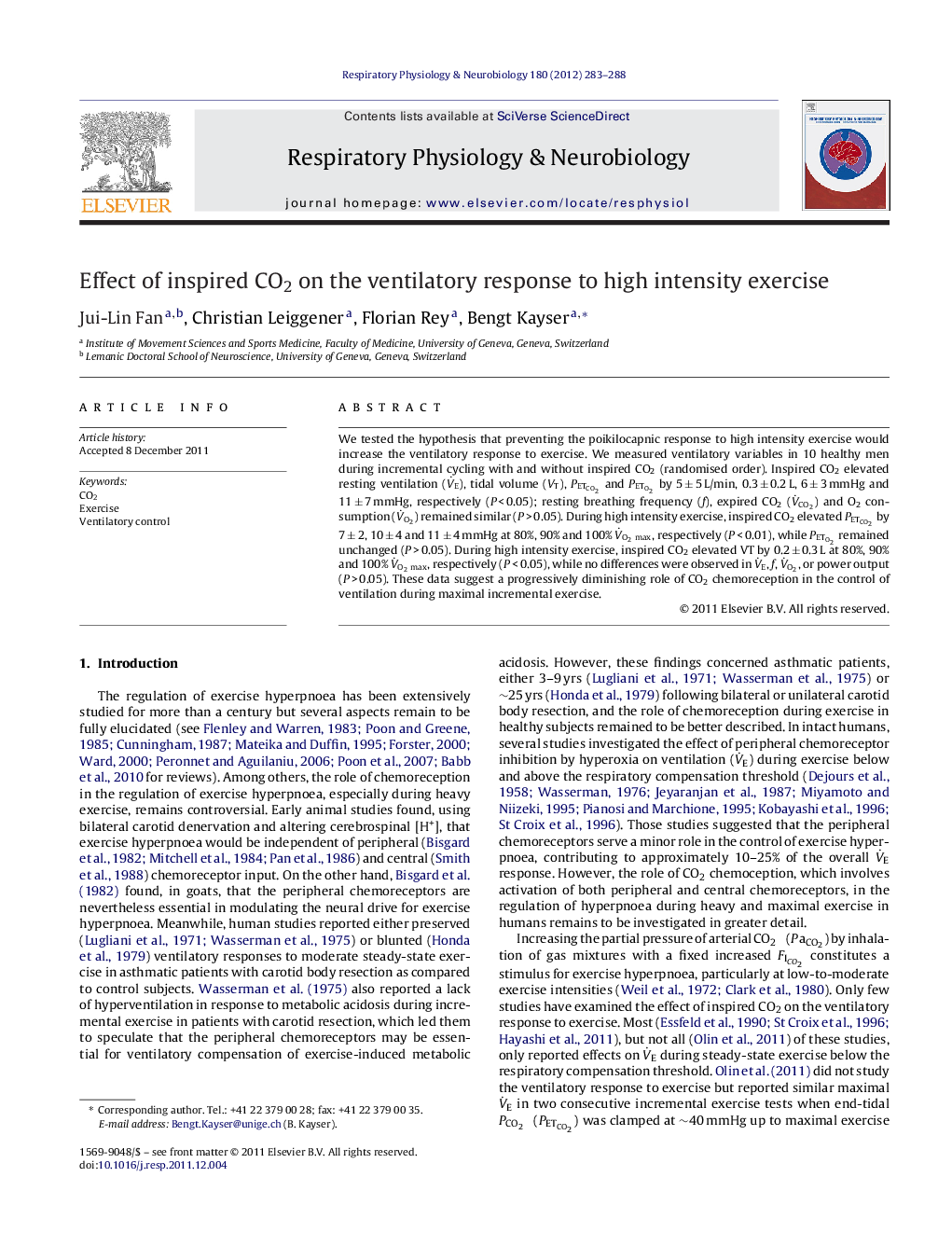| Article ID | Journal | Published Year | Pages | File Type |
|---|---|---|---|---|
| 5926346 | Respiratory Physiology & Neurobiology | 2012 | 6 Pages |
We tested the hypothesis that preventing the poikilocapnic response to high intensity exercise would increase the ventilatory response to exercise. We measured ventilatory variables in 10 healthy men during incremental cycling with and without inspired CO2 (randomised order). Inspired CO2 elevated resting ventilation (VËE), tidal volume (VT), PETCO2 and PETO2 by 5 ± 5 L/min, 0.3 ± 0.2 L, 6 ± 3 mmHg and 11 ± 7 mmHg, respectively (P < 0.05); resting breathing frequency (f), expired CO2(VËCO2) and O2 consumption (VËO2) remained similar (P > 0.05). During high intensity exercise, inspired CO2 elevated PETCO2 by 7 ± 2, 10 ± 4 and 11 ± 4 mmHg at 80%, 90% and 100% VËO2max, respectively (P < 0.01), while PETO2 remained unchanged (P > 0.05). During high intensity exercise, inspired CO2 elevated VT by 0.2 ± 0.3 L at 80%, 90% and 100% VËO2max, respectively (P < 0.05), while no differences were observed in VËE, f, VËO2, or power output (P > 0.05). These data suggest a progressively diminishing role of CO2 chemoreception in the control of ventilation during maximal incremental exercise.
